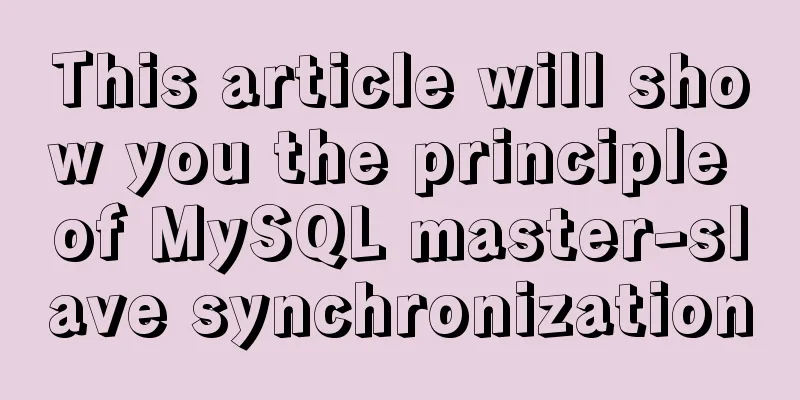Resolving MySQL implicit conversion issues

|
1. Problem Description root@mysqldb 22:12: [xucl]> show create table t1\G *************************** 1. row *************************** Table: t1 Create Table: CREATE TABLE `t1` ( `id` varchar(255) DEFAULT NULL ) ENGINE=InnoDB DEFAULT CHARSET=utf8 1 row in set (0.00 sec) root@mysqldb 22:19: [xucl]> select * from t1; +--------------------+ |id| +--------------------+ | 204027026112927605 | | 204027026112927603 | | 2040270261129276 | | 2040270261129275 | | 100 | | 101 | +--------------------+ 6 rows in set (0.00 sec) Strange phenomenon: root@mysqldb 22:19: [xucl]> select * from t1 where id=204027026112927603; +--------------------+ |id| +--------------------+ | 204027026112927605 | | 204027026112927603 | +--------------------+ 2 rows in set (0.00 sec) 640?wx_fmt=jpeg
What the hell, I checked 204027026112927603, why did 204027026112927605 also come out? 2. Source code explanation The call stack relationship is as follows:
JOIN::exec() is the execution entry point, and Arg_comparator::compare_real() is a function for equal value judgment, which is defined as follows
int Arg_comparator::compare_real()
{
/*
Fix yet another manifestation of Bug#2338. 'Volatile' will instruct
gcc to flush double values out of 80-bit Intel FPU registers before
performing the comparison.
*/
volatile double val1, val2;
val1= (*a)->val_real();
if (!(*a)->null_value)
{
val2 = (*b)->val_real();
if (!(*b)->null_value)
{
if (set_null)
owner->null_value = 0;
if (val1 < val2) return -1;
if (val1 == val2) return 0;
return 1;
}
}
if (set_null)
owner->null_value = 1;
return -1;
}The comparison steps are shown in the figure below. The id column of the t1 table is read row by row and put into val1. The constant 204027026112927603 exists in the cache and its type is double (2.0402702611292762E+17). Therefore, after the value is passed to val2, val2=2.0402702611292762E+17.
When scanning to the first row, the value of 204027026112927605 converted to doule is 2.0402702611292762e17, the equation is established, and it is determined to be a qualified row, and the scan continues. Similarly, 204027026112927603 also meets the conditions.
How to detect whether the conversion of string type numbers to double type overflows? After testing here, when the number exceeds 16 digits, the conversion to double type is no longer accurate. For example, 20402702611292711 will be expressed as 20402702611292712 (as shown in val1 in the figure)
The definition function for converting MySQL string to double is as follows:
{
char buf[DTOA_BUFF_SIZE];
double res;
DBUG_ASSERT(end != NULL && ((str != NULL && *end != NULL) ||
(str == NULL && *end == NULL)) &&
error != NULL);
res = my_strtod_int(str, end, error, buf, sizeof(buf));
return (*error == 0) ? res : (res < 0 ? -DBL_MAX : DBL_MAX);
}The actual conversion function my_strtod_int is located in dtoa.c (too complicated, just post a comment) /* strtod for IEEE--arithmetic machines. This strtod returns a nearest machine number to the input decimal string (or sets errno to EOVERFLOW). Ties are broken by the IEEE round-even rule. Inspired loosely by William D. Clinger's paper "How to Read Floating Point Numbers Accurately" [Proc. ACM SIGPLAN '90, pp. 92-101]. Modifications: 1. We only require IEEE (not IEEE double-extended). 2. We get by with floating-point arithmetic in a case that Clinger missed -- when we're computing d * 10^n for a small integer d and the integer n is not too much larger than 22 (the maximum integer k for which we can represent 10^k exactly), we may be able to compute (d*10^k) * 10^(ek) with just one roundoff. 3. Rather than a bit-at-a-time adjustment of the binary As a result in the hard case, we use floating-point arithmetic to determine the adjustment to within one bit; only in really hard cases do we need to compute a second residual. 4. Because of 3., we don't need a large table of powers of 10 for ten-to-e (just some small tables, eg of 10^k for 0 <= k <= 22). */ In this case, let's test the case where there is no overflow root@mysqldb 23:30: [xucl]> select * from t1 where id=2040270261129276; +------------------+ |id| +------------------+ | 2040270261129276 | +------------------+ 1 row in set (0.00 sec) root@mysqldb 23:30: [xucl]> select * from t1 where id=101; +------+ |id| +------+ | 101 | +------+ 1 row in set (0.00 sec) The result is as expected, and in this case, the correct way to write it should be root@mysqldb 22:19: [xucl]> select * from t1 where id='204027026112927603'; +--------------------+ |id| +--------------------+ | 204027026112927603 | +--------------------+ 1 row in set (0.01 sec) Conclusion Avoid implicit type conversions. Implicit conversions mainly include inconsistent field types, multiple types in the in parameter, inconsistent character set types or proofreading rules, etc. Implicit type conversion may result in the inability to use indexes, inaccurate query results, etc., so you must carefully identify them when using them. It is recommended to define the numeric type as int or bigint when defining the field. When the table is linked, the associated fields must maintain the same type, character set, and collation rules. Finally, let me post the official website's description of implicit type conversion.
Summarize The above is the MySQL implicit conversion introduced by the editor. I hope it will be helpful to everyone. If you have any questions, please leave me a message and the editor will reply to you in time. I would also like to thank everyone for their support of the 123WORDPRESS.COM website! You may also be interested in:
|
<<: How to change the system language of centos7 to simplified Chinese
>>: jQuery custom magnifying glass effect
Recommend
How to build php-nginx-alpine image from scratch in Docker
Although I have run some projects in Docker envir...
JavaScript to implement simple tab bar switching content bar
This article shares the specific code of JavaScri...
How to periodically clean up images that are None through Jenkins
Preface In the process of continuous code deliver...
Exploration and correction of the weird behavior of parseInt() in js
Background: I wonder if you have noticed that if ...
Vue implements a small weather forecast application
This is a website I imitated when I was self-stud...
Solution to the problem of MySQL data delay jump
Today we analyzed another typical problem about d...
A brief discussion on the placement of script in HTML
I used to think that script could be placed anywh...
MySQL 5.7.19 installation tutorial under Windows 10 How to change the root password of MySQL after forgetting it
Take MySQL 5.7.19 installation as an example, fir...
Detailed graphic tutorial on installing and uninstalling Tomcat8 on Linux
[ Linux installation of Tomcat8 ] Uninstall Tomca...
Vue form input binding v-model
Table of contents 1.v-model 2. Binding properties...
Implementation of mysql8.0.11 data directory migration
The default storage directory of mysql is /var/li...
Douban website's method for making small changes to website content
<br />Reading is a very important part of th...
How to use vue3+TypeScript+vue-router
Table of contents Easy to use Create a project vu...
Example of setting up and using the html floating frame (iframe loading html)
Copy code The code is as follows: <!DOCTYPE ht...
Detailed explanation of the usage of MySQL data type DECIMAL
MySQL DECIMAL data type is used to store exact nu...















